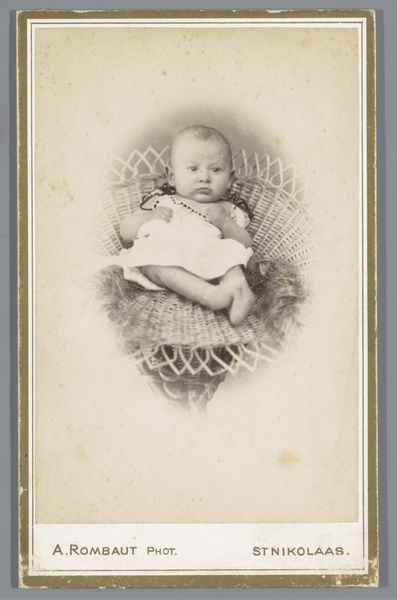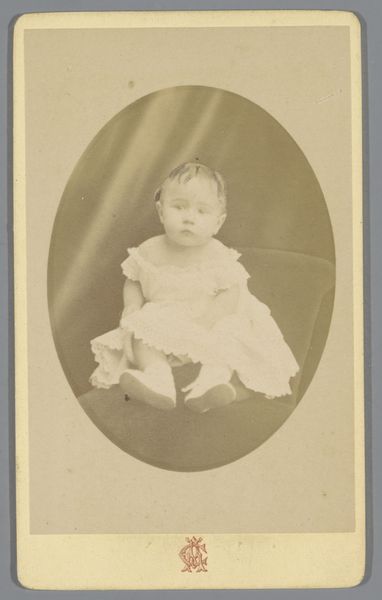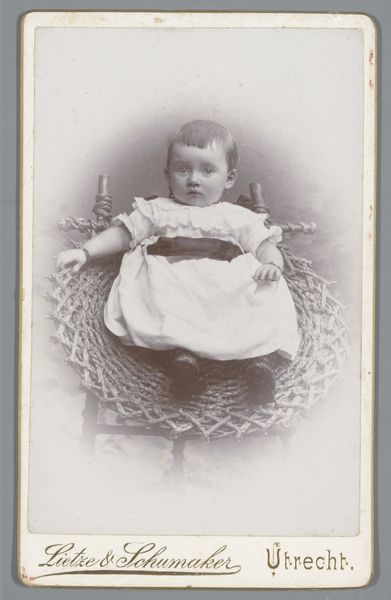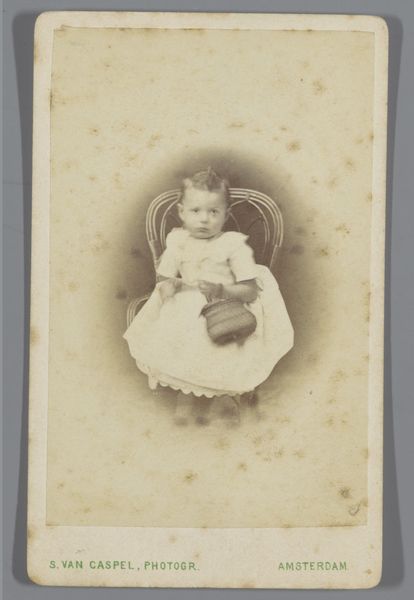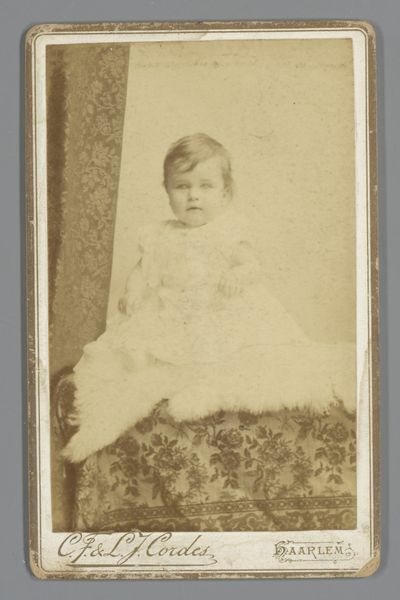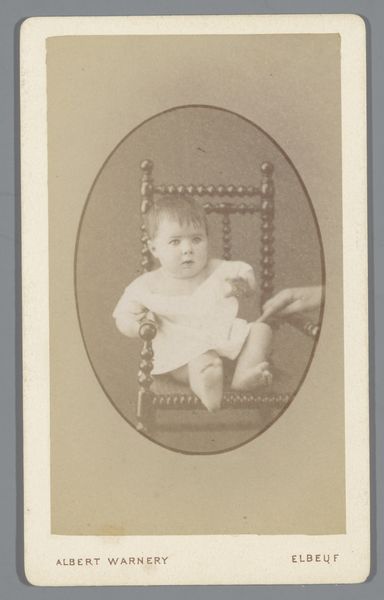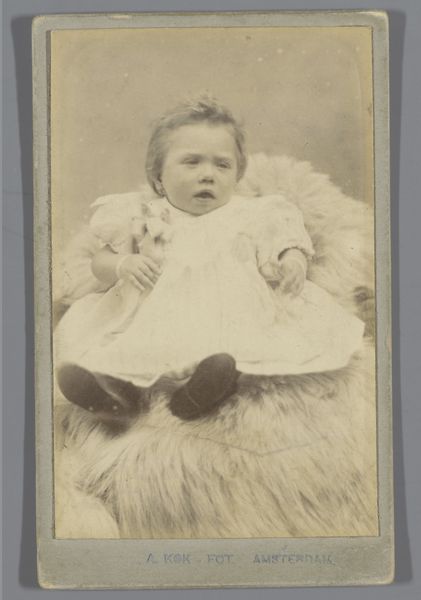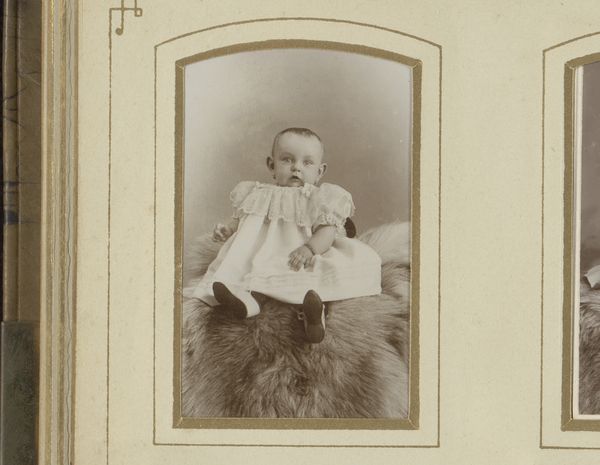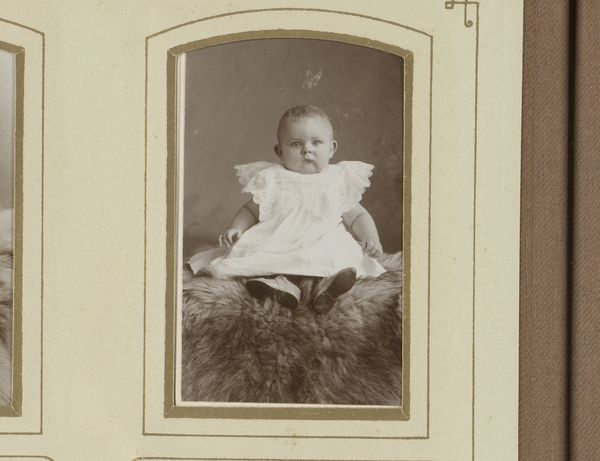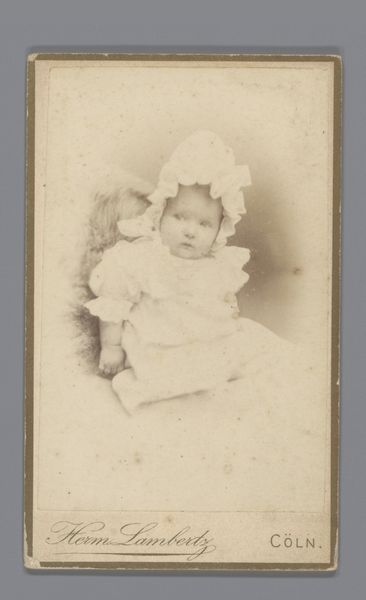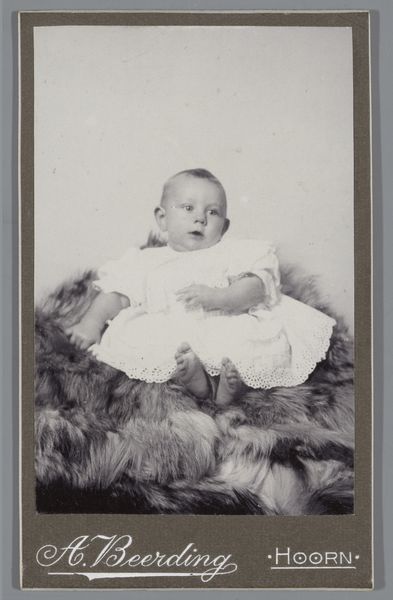
photography
#
portrait
#
still-life-photography
#
photography
Dimensions: height 103 mm, width 63 mm
Copyright: Rijks Museum: Open Domain
Curator: "Portret van Trijntje Kater," a photograph taken sometime between 1890 and 1918 by Jan Siewers. Editor: Instantly, there's this...gentle melancholia? It's subtle, almost lost in the sepia tones. The stark simplicity of the background heightens it. Curator: I agree. There's a beautiful economy of means here, using the soft textures of the fur to offset the almost severe gaze of the child. This piece showcases an engagement with material that reflects how photos during this period were luxury items. Editor: Speaking of that fur, there’s a compelling dialogue between manufactured comfort and natural origins. How does the artist orchestrate these details to negotiate value through labor, materiality, and that social demand you noted earlier? It begs the question—where does the production of art begin? Is it with the child’s ornate lace gown, the origin of the fur, or perhaps, Siewers' engagement with emerging technologies in photography itself? Curator: Absolutely. The whole composition speaks volumes about constructed environments—the carefully arranged setting within a photography studio meant to represent this infant and how they lived their early life, this idea of artifice contributing to the idea of innocence is fascinating. What's most profound is what the picture itself withholds; our limited grasp on the child’s true sentiments or tangible access to that moment in time, it feels both real and staged at the same time. Editor: That dance between tangible and intangible really holds my gaze. Photography immortalized its subjects and catered to human vanity, while relying heavily on chemical and material constraints of its era—gelatin, silver, specific darkroom practices. It feels appropriate to consider that relationship when regarding the history of craft against industry when the very same materials were also fueling the industrial revolution. Curator: Right? When considering these portrait styles, in my mind I imagine this photograph displayed in someone's home. And as that very specific, personal moment in someone's life fades into memory, the object itself has staying power in a very odd and ghostly sort of way. Editor: A ghostly resonance indeed. Considering the production process alongside this moment, it emphasizes the delicate, impermanent quality of life alongside the deliberate work of fixing its fleeting memory. It really highlights the powerful way materiality anchors intangible memories in the landscape of early photographic arts.
Comments
No comments
Be the first to comment and join the conversation on the ultimate creative platform.

